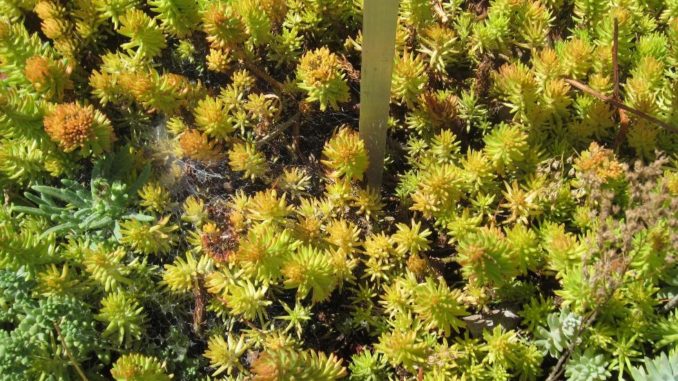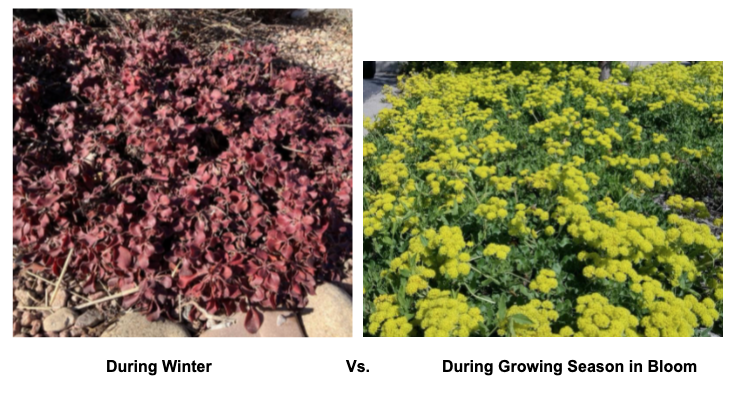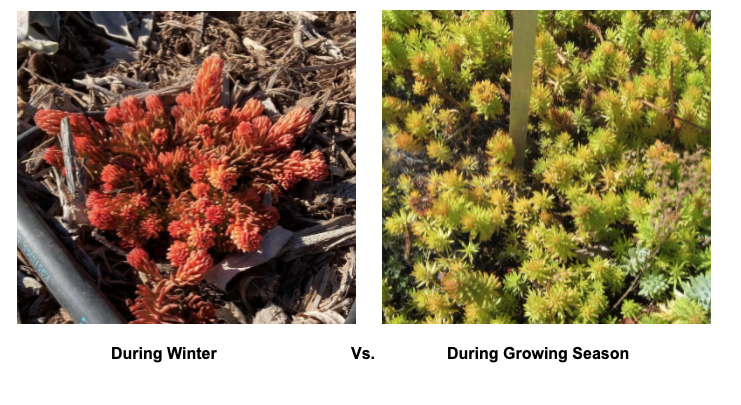
Rita Jokerst | Gardens on Spring Creek
Cold snaps may partially initiate autumnal shows from deciduous trees, particularly the ever-favorite Populus tremuloides, or Quaking Aspen, but beautiful yellows aren’t all you see this fall if you know the reasons for the color changes and where to look.
The science behind these color changes relies on the different levels of plant pigments, most notably chlorophyll, carotenoids and anthocyanins. Chlorophyll is the big player in photosynthesis and gives most plants their typical green color. Carotenoids exist in plants as well, masked by the large presence of chlorophyll in actively photosynthesizing plants. As chlorophyll activity and levels decrease as the growing season comes to an end, carotenoid colors begin to show, most notably in hues of yellows and oranges. Around this same time, anthocyanin production ramps up and accumulates in plant structures too. Although anthocyanin is most typically seen with the onset of colder temperatures, it can also show itself when a plant is exposed to a variety of stressors including drought or poor soil. It typically produces hues of pinks, purples, and reds.
In addition to the plants shown in photos below, many Euonymous, such as Euonymus fortunei ‘Emerald ‘n’ Gold’ (aptly named wintercreeper), develop a spectacular blush on their leaves once the regular cold settles in our region. Likewise, Euphorbia x martinii ‘Ascot Rainbow’ (spurge) becomes a romantic rosy hue in the fall and winter. The spurge is typically rated USDA Hardiness Zone 6 and up, so take care to choose an appropriately protected microclimate for this plant if you add it to your garden. Miscanthus sinensis ‘Zebrinus’ (zebra grass) becomes silvery pink in the fall and then fades to a stately tan once winter is in full force while Sempervivum spp. goes to a mulberry color and stays that way all winter long. Viola corsica (violets) present year-round interest with wine-colored foliage in the winter and (obviously) violet flowers from early spring through late fall. These are just a sample of the many beautiful plants that present a display throughout the entirety of the year at The Gardens. Happy fall, ya’ll, and come see us soon!



Support Northern Colorado Journalism
Show your support for North Forty News by helping us produce more content. It's a kind and simple gesture that will help us continue to bring more content to you.
BONUS - Donors get a link in their receipt to sign up for our once-per-week instant text messaging alert. Get your e-copy of North Forty News the moment it is released!
Click to Donate
